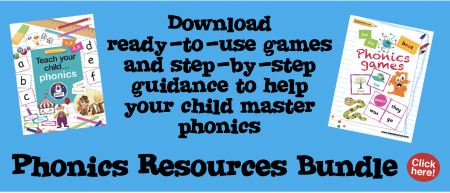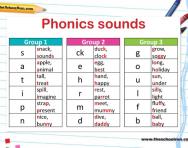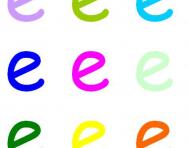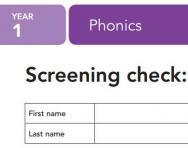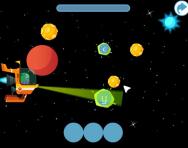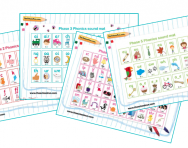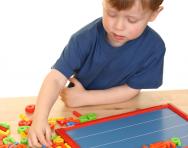Phonics phases explained
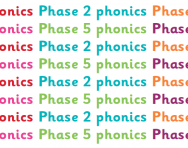
When your child starts school, phonics becomes a big part of everyday life, transforming them from a non-reader to a child who is capable of reading fluently and spelling (mostly!) accurately by the end of Year 2.
Primary schools follow different phonics schemes, and each takes a slightly different approach to teaching phonics, but it’s common for your child to be taught in a series of phases throughout the Foundation Stage and Key Stage 1.
Phase 1
Early phonics teaching in pre-school, in Nursery English and at the start of Reception focuses on developing children’s listening skills. ‘Early years environments do a lot of aural work at quite a slow pace, training children in awareness of sounds,’ explains Sara Wernham, a primary school teacher and one of the developers of the Jolly Phonics scheme.
In Phase 1 phonics, children are taught about:
- Environmental sounds
- Instrumental sounds
- Body percussion (e.g. clapping and stamping)
- Rhythm and rhyme
- Alliteration
- Voice sounds
- Oral blending and segmenting (e.g. hearing that d-o-g makes ‘dog’)
Phase 2 phonics
In Phase 2, children begin to learn the sounds that letters make (phonemes). There are 44 sounds in all. Some are made with two letters, but in Phase 2, children focus on learning the 19 most common single letter sounds. ‘These are broken down into smaller sets of about six sounds to make them more achievable for children to learn,’ says Sara.
Although the order in which sounds are taught will depend on which scheme your child’s school follows, usually, they will learn the most commonly used phonemes first, starting with: /s/, /a/, /t/, /i/, /p/, /n/.
By the end of Phase 2 children should be able to read some vowel-consonant (VC) and consonant-vowel-consonant (CVC) words, and to spell them out. They also learn some high frequency ‘tricky words’ like ‘the’ and ‘go.’ This phase usually lasts about six weeks.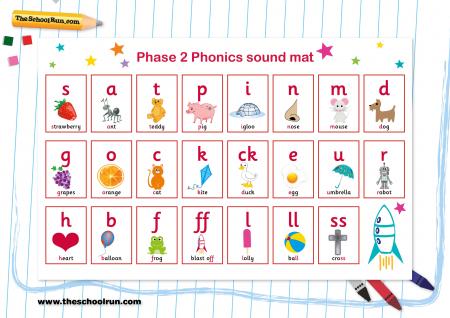
Phase 3 phonics
Phase 3 introduces children to the remaining, more difficult and/or less commonly used phonemes. There are around 25 of these, depending on which scheme is followed, mainly made up of two letters such as /ch/, /ar/, /ow/ and /ee/. ‘We need these sounds to be able to read and form useful words,’ says Sara.
Alongside this, children are taught to recognise more tricky words, including ‘me,’ ‘was,’ ‘my,’ ‘you’ and ‘they’. They learn the names of the letters, as well as the sounds they make. Activities might include learning mnemonics (memory aids) for tricky words, practising writing letters on mini whiteboards, using word cards and singing songs like the Alphabet Song.
Phase 3 takes most children around 12 weeks. By the end, they should be able to say the sound made by most, or all, Phase 2 and 3 graphemes, blend and read CVC words made from these graphemes, read 12 new tricky words and write letters correctly when given an example to copy.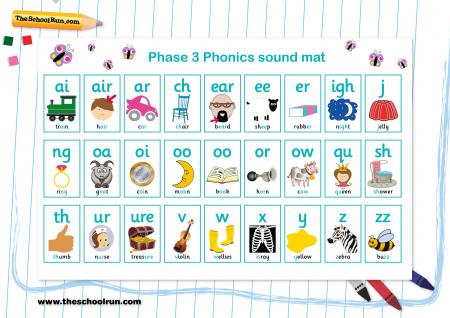
Phase 4 phonics
By now, children should be confident with each phoneme. ‘From here on, phonics teaching is about consolidating and refining their knowledge, introducing more spelling patterns and tricky words, and increasing vocabulary,’ Sara says.
In Phase 4 phonics, children will, among other things:
- Practise reading and spelling CVCC words (‘bump', 'nest', ‘belt,’ ‘milk’, etc)
- Practise reading and spelling high frequency words
- Practise reading and writing sentences
- Learn more tricky words, including ‘have,’ ‘like,’ ‘some,’ ‘little’
Children should now be blending confidently to work out new words. They should be starting to be able to read words straight off, rather than having to sound them out. They should also be able to write every letter, mostly correctly. This phase usually takes four to six weeks, and most children will complete it around the end of Reception. 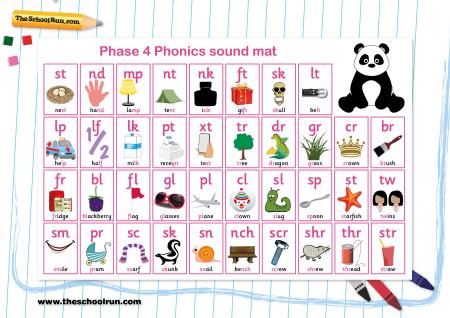
Phase 5 phonics
Phase 5 generally takes children the whole of Year 1. ‘Here, we start introducing alternative spellings for sounds, like 'igh',” says Sara. ‘Children master these in reading first, and as their fluency develops, we begin to see them using them correctly in spelling.’
Children learn new graphemes (different ways of spelling each sound) and alternative pronunciations for these: for example, learning that the grapheme ‘ow’ makes a different sound in ‘snow’ and ‘cow’.
They should become quicker at blending, and start to do it silently.
They learn about split digraphs (the ‘magic e’) such as the a-e in ‘name.’
They’ll start to choose the right graphemes when spelling, and will learn more tricky words, including ‘people,’ ‘water’ and ‘friend’. They also learn one new phoneme: /zh/, as in ‘treasure.’
By the end of Year 1, children should be able to:
- Say the sound for any grapheme they are shown
- Write the common graphemes for any given sound (e.g. ‘e,’ ‘ee,’ ‘ie,’ ‘ea’)
- Use their phonics knowledge to read and spell unfamiliar words of up to three syllables
- Read all of the 100 high frequency words, and be able to spell most of them
- Form letters correctly
At the end of Year 1, all children are given a Phonics Screening Check to ensure they have mastered the appropriate knowledge.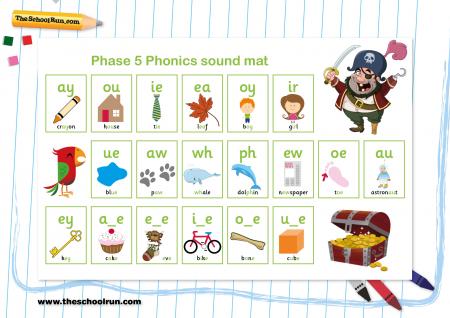
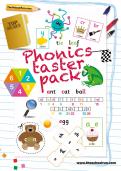
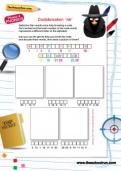
Download a FREE phonics pack
- Phonics phases sound mats
- 5 phonics games
- Plus access hundreds more phonics worksheets when you register for FREE
Phase 6 phonics
Phase 6 phonics takes place throughout Year 2, with the aim of children becoming fluent readers and accurate spellers.
By Phase 6, children should be able to read hundreds of words using one of three strategies:
- Reading them automatically
- Decoding them quickly and silently
- Decoding them aloud
Children should now be spelling most words accurately (this is known as 'encoding'), although this usually lags behind reading. They will also learn, among other things:
- Prefixes and suffixes, e.g. ‘in-’ and ‘-ed’
- The past tense
- Memory strategies for high frequency or topic words
- Proof-reading
- How to use a dictionary
- Where to put the apostrophe in words like ‘I’m’
- Spelling rules
Although formal phonics teaching is usually complete by the end of Year 2, children continue to use their knowledge as they move up the school. ‘The whole aim of phonics teaching is not just to learn the sounds, but to use them as a tool for reading and spelling,’ explains Sara. ‘Everything leads on to independent reading and writing.’
Phonics worksheets to download
Look through our phonics worksheets to help your child put their phonics learning into practice:

Give your child a headstart
- FREE articles & expert information
- FREE resources & activities
- FREE homework help
